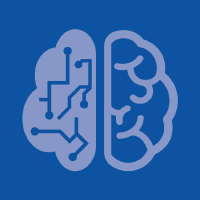Topic Menu
► Topic MenuTopic Editors


2. Effat College of Business, Effat University, Jeddah 21551, Saudi Arabia

Digital Transformation and E-Government
Topic Information
Dear Colleagues,
The application of information and communication technologies towards sustainable services and applications in the government sector and in all its integrations with citizens, companies, and organizations set a challenging context for digital transformation and e-government. This Topic section promotes the scientific dialogue for the added value of novel methodological approaches and research in the specified areas. Our interest is on the entire end-to-end spectrum of the digital transformation including enabling technologies, strategic frameworks, models, and best practices to sophisticated research related to artificial intelligence enabled applications.
The topics include but are not limited to the following indicative list:
- Enabling technologies as they contribute to digital transformation and e-government:
- Data warehouses;
- Business intelligence;
- Document management systems and collaboration platforms;
- Big Data analytics and dashboard;
- Artificial intelligence;
- Intelligent agents;
- 5G and 6G networks;
- Blockchain;
- Open source technologies,
- Methodologies, frameworks, and models for digital transformation and e-government:
- Towards sustainable development goals;
- As responses to social problems and challenges;
- For innovations in the core business of digital transformation and e-government;
- For theoretical foundations and contributions to the body of knowledge of digital transformation and e-government,
- Best practices and use cases;
- Outcomes of R&D projects;
- Advanced data science analytics;
- Key performance indicators;
- Industry-government collaboration;
- Systems of information systems;
- Interoperability issues;
- Security and privacy issues;
- Ethics on digital transformation.
Prof. Dr. Miltiadis D. Lytras
Prof. Dr. Anna Visvizi
Dr. Anastasija Nikiforova
Topic Editors
Keywords
- digital transformation
- e-government
- data science
- government analytics
- decision making
- sustainable development goals
- social computing
- social impact
- big data research
Participating Journals
| Journal Name | Impact Factor | CiteScore | Launched Year | First Decision (median) | APC |
|---|---|---|---|---|---|

Big Data and Cognitive Computing
|
3.7 | 4.9 | 2017 | 18.2 Days | CHF 1800 |

Digital
|
- | - | 2021 | 22.7 Days | CHF 1000 |

Future Internet
|
3.4 | 6.7 | 2009 | 11.8 Days | CHF 1600 |

Information
|
3.1 | 5.8 | 2010 | 18 Days | CHF 1600 |

Sustainability
|
3.9 | 5.8 | 2009 | 18.8 Days | CHF 2400 |

MDPI Topics is cooperating with Preprints.org and has built a direct connection between MDPI journals and Preprints.org. Authors are encouraged to enjoy the benefits by posting a preprint at Preprints.org prior to publication:
- Immediately share your ideas ahead of publication and establish your research priority;
- Protect your idea from being stolen with this time-stamped preprint article;
- Enhance the exposure and impact of your research;
- Receive feedback from your peers in advance;
- Have it indexed in Web of Science (Preprint Citation Index), Google Scholar, Crossref, SHARE, PrePubMed, Scilit and Europe PMC.

